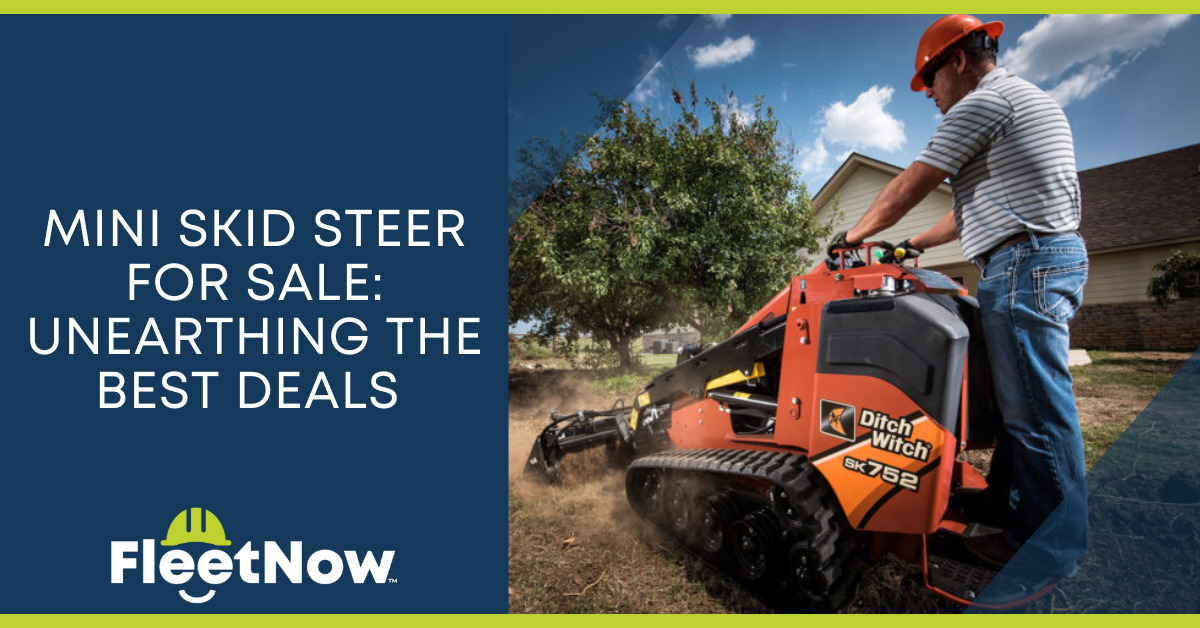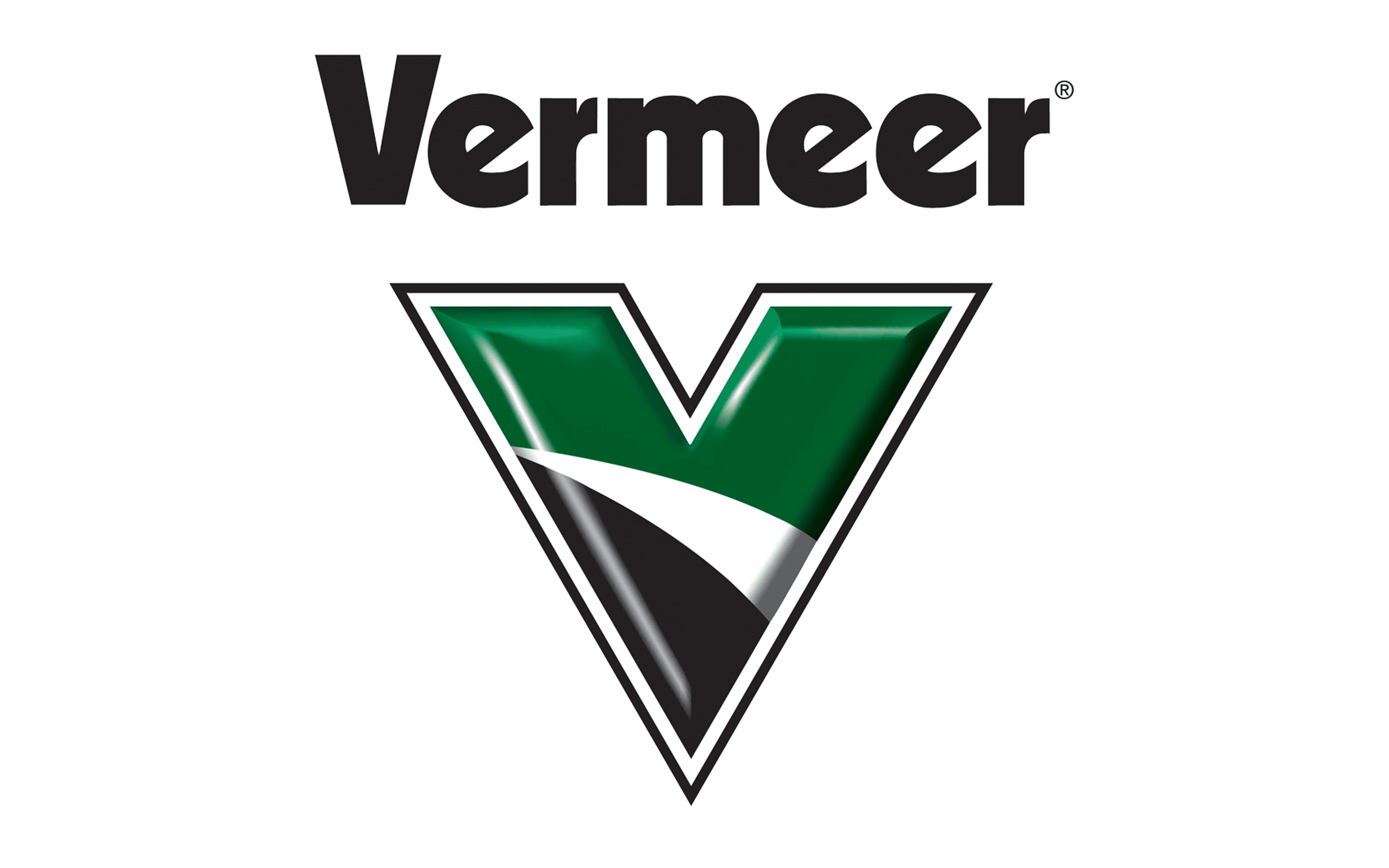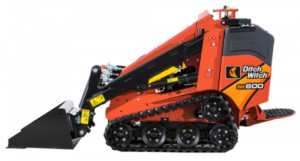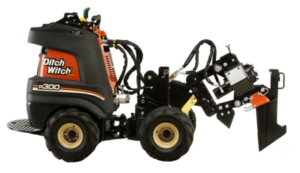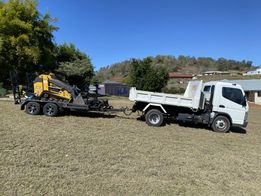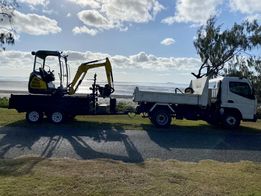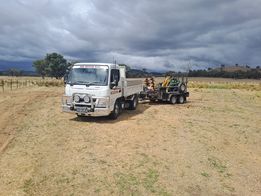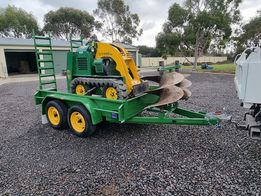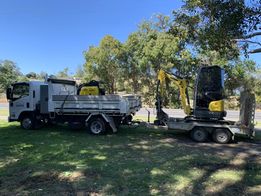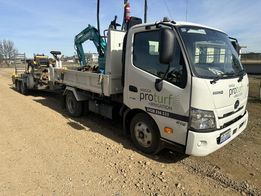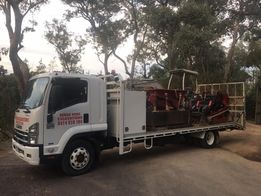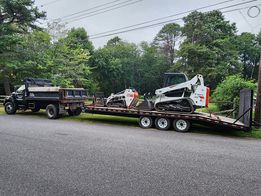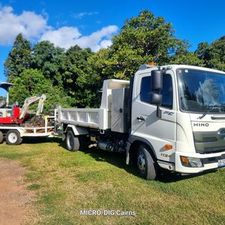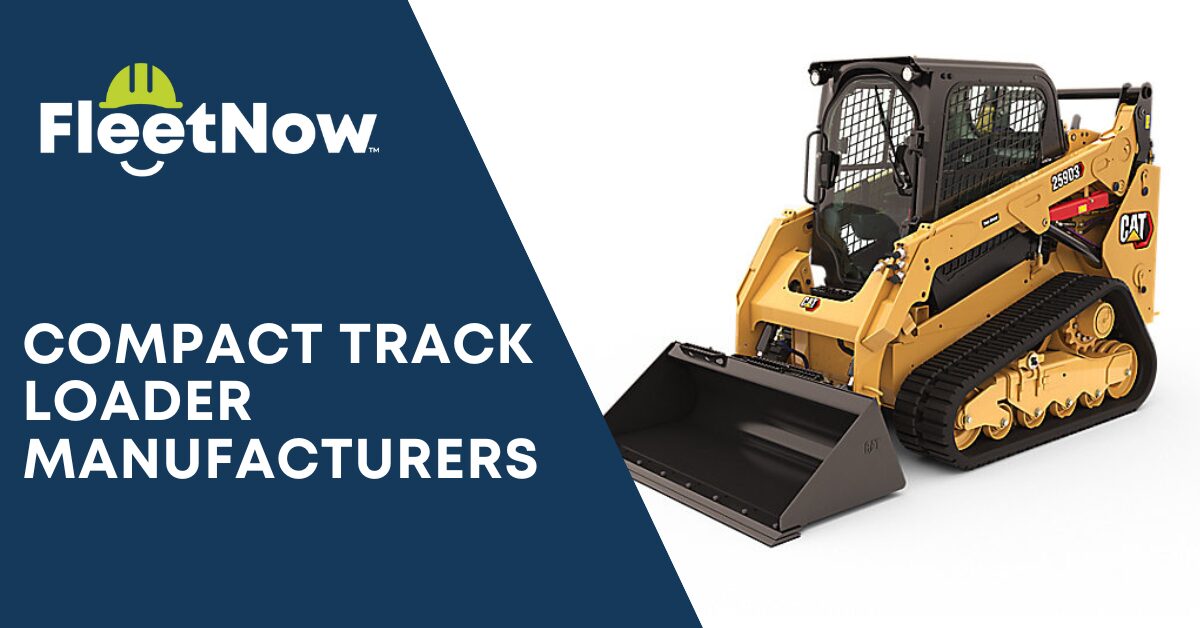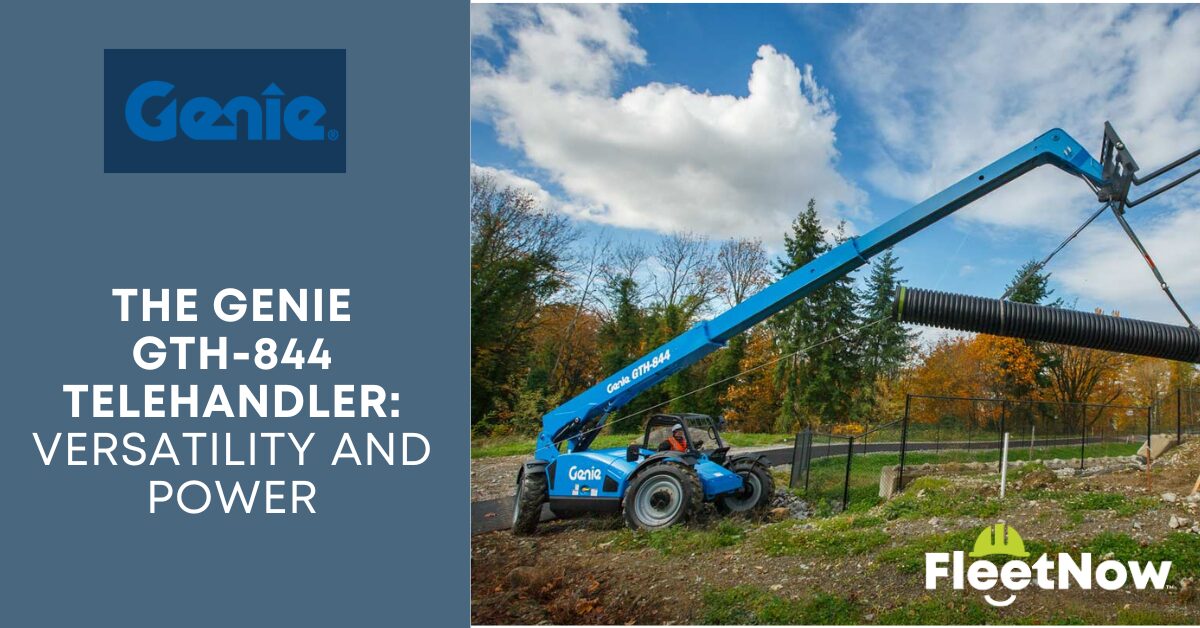This article was originally published in July of 2021 and updated in September 2024.
Mini Skid Steer For Sale: Unearthing The Best Deals
Mini skid steers, also known as mini skid loaders or compact utility loaders, have emerged as versatile powerhouses, capable of tackling a wide range of tasks with ease. From landscaping projects to snow removal, mini skid steers can assist with various projects. If you’re looking for a compact, yet robust solution for your projects, a mini skid steer may be right for you!
Mini Skid Steer Manufacturers
There are several manufacturers of mini skid steers, each offering a range of models with various features and capabilities. Below are some well-known manufacturers of mini skid steers:
To learn more about Kubota mini skid steers, read our blog post titled “Kubota Mini Skid Steers: Small Size, Big Impact.”
To learn more about Vermeer mini skid steers, read our blog post titled “Vermeer Mini Skid Steer: Small But Mighty.”
To learn more about Ditch Witch mini skid steers, read our blog post titled “Ditch Witch Mini Skid Steers: Versatility Meets Efficiency.”
To learn more about Toro mini skid steers, read our blog post titled “Toro Mini Skid Steers: Small Package, Big Performance.”
What Are Mini Skid Steers Used For?
Mini skid steers are versatile pieces of construction and landscaping equipment used for various tasks. With the necessary attachment, here are some common uses for mini skid steers:
Excavation: Mini skid steers can dig trenches, excavate small areas, and handle grading tasks.
Landscaping: Mini skid steers are often employed for landscaping projects, including grading, leveling, and creating smooth surfaces for lawns or gardens. They can also be used for tasks like digging holes for plants and trees.
Material Handling: Mini skid steers can be equipped with buckets, forks and grapples to transport materials such as soil, gravel, mulch, and debris within construction sites or landscaping projects.
Construction: They can assist in small-scale construction tasks like moving and placing building materials, as well as digging foundations and utility trenches.
Snow Removal: Attachments like snow blowers and plows turn mini skid steers into efficient snow removal machines, ideal for clearing driveways, sidewalks, and small parking lots.
DIY Projects: Homeowners and DIY enthusiasts often use mini skid steers for various tasks around the property, from excavation and landscaping to small construction and maintenance projects.
Accessing Tight Spaces: The compact size and maneuverability of mini skid steers make them suitable for working in confined spaces, urban areas, and locations with limited accessibility.
Mini skid steers are used on farms, nurseries, landscaping jobs, construction sites and more. The variety of attachments and configurations of mini skid steers mean that there are a lot of uses for these machines. Here are some of the most common uses:
- Mow thick grass and brush with a flail attachment
- Move logs with a grapple attachment
- Move and pile hay with a fork attachment
- Materials handling with a bucket or forklift attachment
- Digging holes with an augur attachment
- Plow snow with a plow attachment
As you can see, with the right attachments, a mini skid steer is a true little workhorse that save workers from a lot of heavy lifting, and carry out a huge variety of tasks on a worksite.
Choosing the Right Mini Skid Steers For Your Job
When choosing mini skid steer to purchase, it is important understand which tire type will help you get your job done most efficiently. A wheeled mini skid steer is ideal for work on level surfaces, such as hard-packed dirt, asphalt or concrete. Tracked mini skid steers, due to their border weight distribution, do not sink into soft surfaces. This makes tracked mini skid steers ideal for wet, muddy or snow ground, loose gravel and loose sand.
Example of a Tracked Mini Skid Steer:
Example of a Wheeled Mini Skid Steer:
Along with tire type, here are some other factors to keep in mind when choosing the right mini skid steer for you:
- Size & Capacity
- Attachments & Compatibility
- Engine Power
- Operating Capacity & Lift Height
- Size & Maneuverability
- Brand Reputation
- Price
- Warranty & Support
Types of Mini Skid Steer Attachments
Mini Skid Steers are versatile machines and they can be equipped with a wide range of attachments to perform various tasks. The availability of attachments may vary depending on the manufacturer and model of your mini skid steer, but here are some common attachments you can consider:
Buckets
Forks
Augers
Trenchers
Grapples
Hydraulic Breakers
Pallet Forks
Sweepers
Rotary Cutters
Brooms
Snow Blowers
Stump Grinders
Tillers
Landscaping Rakes
Concrete Mixers
One manufacturer of mini skid steer attachments is Blue Diamond Attachments. To learn more about Blue Diamond Attachments, check out this blog post; Blue Diamond Attachments: Reviews, Models & Where To Buy. To see all of the attachments offered by Blue Diamond attachments, visit the Blue Diamond Attachments website.
Prices of Mini Skid Steers For Sale in July 2021
At the original publication of this article, in July 2021, a used mini skid steer for sale was priced between $8,000 and $12,000, depending on age and condition. A brand-new mini skid steer ranged from $25,000 to $60,000, depending on the range of applications it could be used for, type of track, lift capacity and other features. We can see that the price of mini skid steers have increased significantly over a few short years from 2021 to 2023.
How Can I Transport My Mini Skid Steer?
Whether a mini skid steer has tires or tracks, you’re not going to be driving it to your jobsite through traffic. The good news is that thanks to the small size of mini skid steers, they can be loaded on a flatbed trailer for transport to your jobsite as long as you have a heavy duty pickup truck or something similar to tow it. Here are some tips for moving your mini skid steer on a flatbed trailer.
- Chock the wheels on the trailer before loading the mini skid steer.
- Back the machine onto the trailer in reverse, so the front arms and any attachments are pointed away from the towing vehicle.
- Center the mini skid steer over the axles of the trailer. Lower the bucket or front arms of the skid steer as low as possible.
- Many manufacturers of mini skid steers now make the machines with D-rings built in for chain attachments. Use those with chains and/or comealongs at the four corners, so the mini skid steer is fastened down front and back, and side to side.
- Double check that everything is secure before heading to your jobsite.
The Facebook group, Mini Skid Steer Enthusiasts, is a place for those interested in mini skid steers to talk about their machines, jobs/projects, mini skid steer attachments and possible problems that may arise involving their mini skid steers.
One member of the group requested to see pictures of the set up other members had to transport their mini skid steers. Below are some of the images that members responded with, showing how they transport their mini skid steer:
Here’s a Video Detailing the Ditch Witch SK1550 Mini Skid Steer:
A mini skid steer or compact utility loader is a go-to tool for many landscaping businesses these days. The machines are versatile enough to fit into tight spaces, and with the variety of attachments available, they can be used for everything from pushing dirt to seeding a lawn to auguring holes for trees or fence posts. If you’re looking for a mini skid steer for sale, or if you’re not sure whether one is the right addition for your business, we’ll try to answer some of the most common questions out there about these handy machines.
What to Look for When Buying a Used Mini Skid Steer?
If you are thinking about investing in a used mini skid steer, it’s a great idea to bring along your own mechanic. This will give you a professional second opinion on the condition of the machine. Plus, a second set of eyes might notice something that you missed in your own inspection of it. Here are some additional things to look for:
Review the Skid Steer’s Work History
The type of work that a mini skid steer is used for is obviously going to affect its lifespan and the amount of future maintenance it might need. A mini skid steer used to dig post holes in soft, manicured lawns has probably been abused less than one that’s been used to bust up concrete on construction sites, for example. Take the climate and the elements where the mini skid steer has been stored into consideration as well. A machine that’s been left out in rain, snow, sleet or a saltwater climate may require more maintenance in the long run, compared to one that has been stored in a garage bay.
Do a Nose-to-Tail Visual Inspection
Check out the overall appearance of the mini skid steer and look for damage or signs of wear and tear. If you see a lot of spot welds, cracks in the metal, dents in the frame and other signs of damage, the machine has probably seen quite a bit of abuse. Check the treads, the battery and cables, and so on.
Review the Used Mini Skid Steer’s Hour Log
The hours that a mini skid steer has been used over its lifespan can have an impact on how much utility it will have in years to come. Lower hours obviously mean that a mini skid steer has been lightly used. A full-time mini skid steer is often used for up to six hours per day. Knowing this, you can figure out an approximate average of the amount of use that the used mini has put in. Extremely high use of a mini skid steer is going to translate into added maintenance in the years to come.
Review the Maintenance Records
If the previous owner has kept good maintenance records, this will let you know that a mini skid steer has been well cared for. If the machine has needed any major unexpected repairs over the years, it can be a warning sign that you may want to pass on it. If a mini skid steer has had regular maintenance and inspections over the years, it is probably still in really good shape.
Choose the Right Skid Steer for Your Job
A major factor in buying or renting a used mini skid steer is the types of jobs you need it to handle. If you need the mini skid steer for materials handling and lift, one with a vertical lift is the best choice. If you plan to use it mainly for auguring, landscaping or construction jobs, a radial lift will work better.
The type of surface that the mini skid steer will be used on is also a factor. If your worksite is on pavement or concrete, a wheel loader mini skid steer is a better choice. If it’s a bumpy work surface, muddy, rocky or snowy, a track loader is the better choice.
Some attachments for mini skid steers also use extra hydraulics, such as augurs or brush flails. If you plan to use one for those tasks, make sure you choose one with the proper hydraulics.
What is the Best Mini Skid Steer?
That depends on who you ask. If you ask Ditch Witch, they’ll tell you that a Ditch Witch mini skid steer is the absolute best one. If you ask Toro, Vermeer or Bobcat, they will each tell you that their mini skid steers are the best. Honestly, the best mini skid steer for your business is the one that’s going to carry out all the tasks that you need it to.
What is the Smallest Skid Steer You Can Buy?
As of this writing, the model RT-25 from ASV is considered one of the smallest, if not THE smallest, mini skid steers on the market. It’s a seated track loader aimed squarely at the landscaping market with a load capacity of 660 lbs. and a 65 horsepower engine. The amazing thing about the engineering of the nimble RT-25 is that it has a 3.1 psi ground rating, for minimal turf disturbance when working on lawns. All of its competitors are ground rated above 4 psi, giving the RT-25 a clear advantage over every other landscaping mini skid steer.
How Much Does it Cost to Rent a Skid Steer?
Renting a used mini skid steer can be a considerable cost savings, especially if you only need one short-term or for a seasonal application. The features and attachments can impact the rental price, but a mini skid steer rental should average around $175 to $200 per day. Rental costs are often lowered if you sign a contract for a longer period. For example, renting one for a week can average about $750 to $1000 (which lowers the cost per day).
Operate a Skid Steer Safely
It goes without saying that anyone operating a mini skid steer should be fully trained in how to safely operate the machine. Here are some pointers on safely operating a mini skid steer:
- Always wear the proper PPE for the job.
- Mini skid steers don’t have the same stability as mid-sized or full-sized skid steers. Attempting to lift heavy objects like logs or pallets on a slope will cause them to tip over. Compact skid steers should primarily be used on flat surfaces.
- Remember that mini skid steers are there to get a job done more efficiently — not necessarily faster! Maintain slow speeds on the job to avoid accidental rollovers.
- If you need to maintain a load at a certain angle, be sure to use the auto-leveling feature.
- Use the proper size attachments with a mini skid steer. Attachments that are too big can reduce the machine’s operating capacity. Attachments that are too small are likely to break.
- Don’t park your mini skid steer on a slope.
- Maintain the regular recommended maintenance schedule for your mini skid steer. This keeps the machine in tip-top shape, and regular inspections also allow for problems that could become safety hazards to be located early.
Mini Skid Steer For Sale
Click here for used Mini Skid Steers For Sale in the United States.

